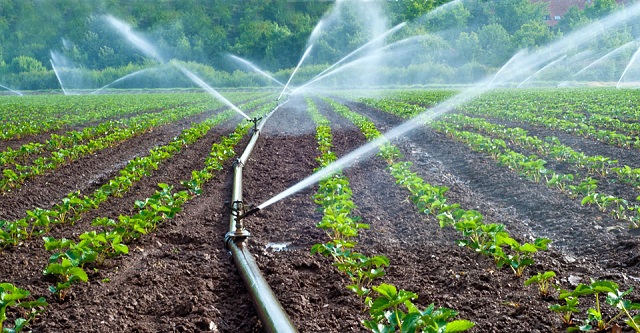
The Sunday News

Dumisani Nsingo , Senior Farming Reporter
TO have more than a meal a day is luxury to those who have endured life at Simangani Village, a dry area on the fringes of the Zambezi Valley in Hwange district.
Simangani is one of the many villages in Zimbabwe’s remote areas that tell of a sad story of villagers exposed to hunger and subsequent poverty. Simangani village is characterised by very low rainfall, hard red soils and scattered thorny bushes.
Rain fed agriculture does not yield enough. Animal husbandry is a risk, unless a villager is fortunate enough to buy stockfeed.
On harvest, families hardly fill up their granaries. Some villagers confess that during the dry season they go for days without consuming a decent meal.
Between July and December food reserves at most households would be running on empty with the majority of village dwellers scrounging for the little that is left from a poor harvest. For years villagers have lost hope of ever-finding a solution to alleviate food insecurity in their community.
According to Mr Christopher Nyoni, chairman of the Simangani Farmers Group, despair had gotten the better of their lives, until the word “irrigation” popped up during one of their community meetings. It took the willingness of a small grouping of committed villagers to reignite the community’s hopes to farm all year round.
“If hunger persists to levels where people lose hope, it means we have to seek solutions fast. We had to think outside the box. We realised that irrigation is possible on the land adjacent to the Deka River, which never runs dry.”
Upon this observation (of a readily available water source) the villagers opted for the construction of an irrigation scheme that would utilise water drawn from Deka River.
In November 2014, the Catholic Agency for International Aid (Caritas) Hwange district came on board to assist.
The non-governmental organisation bought into the idea and started installing solar power panels and equipment on the proposed irrigation scheme’s site.
This set the ground for the irrigation concept, which is said to have been first conceived in the 1970s but was stalled by lack of funding partners. The new agricultural project is envisaged to benefit over 70 households.
“This was planned long back but no-one was willing to assist us. In the whole of Simangani this site is the only one with soils that favour cropping. Deka River is nearby so water was not an issue. The issue was on how to get that water to the garden. It started as a small garden but later the villagers planned to increase the area under cultivation so as to grow a variety of cereals and horticultural produce,” Nyoni said.
The area to be cropped covers six hectares and cropping activities for the new irrigation scheme are expected to commence next month. The scheme would be irrigated using water drawn by a solar powered pump.
At its peak, the pump can draw 20 litres of water per second which would be pumped into a 100 000 litre reservoir and then released through a canal system for irrigation purposes.
Mr Super Dube, Caritas Hwange district coordinator said the project would immensely improve the livelihood of the rural folks.
“The idea is to help alleviate food shortage. This is a dry area and villagers cannot rely on the rain. This irrigation project will change their lives. Once the planting begins, the villagers will realise that this is where their lives are depended upon,” he said.
Construction and designs of the water system and canal irrigation system was spearheaded by the district’s Irrigation Department, engineer Vivian Dube.
“Working together made a difference. The local community shared this vision for a long time and they want to farm and produce food. The canals were built by the villagers. I came in with demonstration and expertise. I only directed the plan and what they did was to use the trowels and lay the concrete. They were involved full time,” he said.
Apart from addressing the food security issue, the irrigation scheme is set to impart to the villagers the requisite knowledge of managing farming as a business.
It is largely anticipated that proceeds from the irrigation scheme would be channelled towards children’s school fees, construction of a clinic and improve household income.
The Caritas district coordinator said upon their first harvest, the villagers are assured of a ready market for their produce.
Simangani is about 40 kilometres from the coal-mining town and the district is home to a number of hospitality and tourism players, in the form of hotels and lodges.
“There are many lodges and camping sites that want the vegetables. The big market is in Hwange town. The fact that this project is the biggest in Hwange district means villagers can penetrate markets as far as Victoria Falls, Binga and even Lupane,” Mr Dube said.



